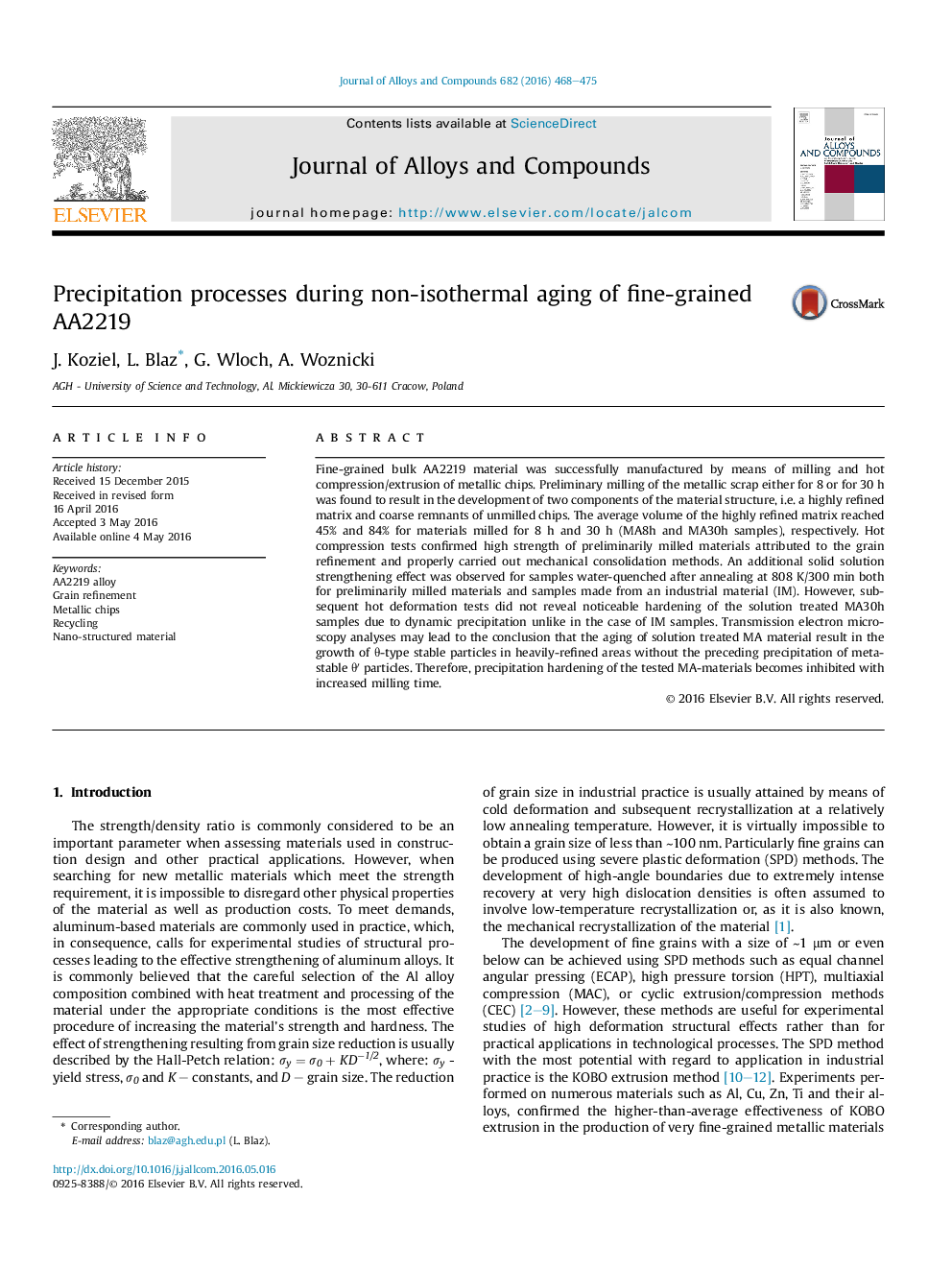| Article ID | Journal | Published Year | Pages | File Type |
|---|---|---|---|---|
| 7997102 | Journal of Alloys and Compounds | 2016 | 8 Pages |
Abstract
Fine-grained bulk AA2219 material was successfully manufactured by means of milling and hot compression/extrusion of metallic chips. Preliminary milling of the metallic scrap either for 8 or for 30 h was found to result in the development of two components of the material structure, i.e. a highly refined matrix and coarse remnants of unmilled chips. The average volume of the highly refined matrix reached 45% and 84% for materials milled for 8 h and 30 h (MA8h and MA30h samples), respectively. Hot compression tests confirmed high strength of preliminarily milled materials attributed to the grain refinement and properly carried out mechanical consolidation methods. An additional solid solution strengthening effect was observed for samples water-quenched after annealing at 808 K/300 min both for preliminarily milled materials and samples made from an industrial material (IM). However, subsequent hot deformation tests did not reveal noticeable hardening of the solution treated MA30h samples due to dynamic precipitation unlike in the case of IM samples. Transmission electron microscopy analyses may lead to the conclusion that the aging of solution treated MA material result in the growth of θ-type stable particles in heavily-refined areas without the preceding precipitation of metastable θⲠparticles. Therefore, precipitation hardening of the tested MA-materials becomes inhibited with increased milling time.
Related Topics
Physical Sciences and Engineering
Materials Science
Metals and Alloys
Authors
J. Koziel, L. Blaz, G. Wloch, A. Woznicki,
